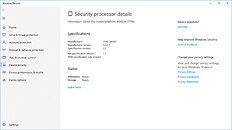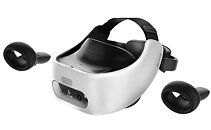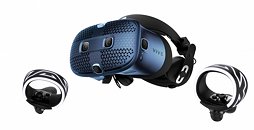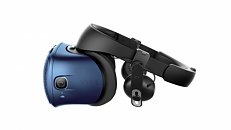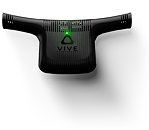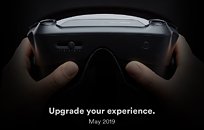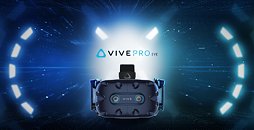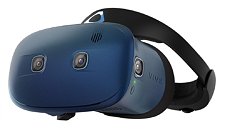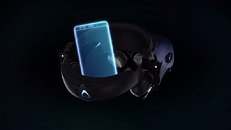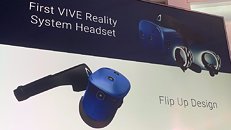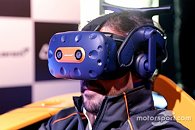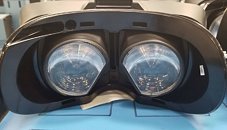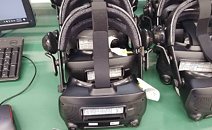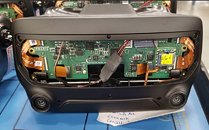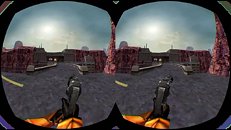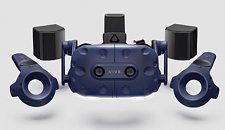Apr 16th, 2025 09:07 EDT
change timezone
Latest GPU Drivers
New Forum Posts
- Windows 11 fresh install to do list (22)
- 5070ti overclock...what are your settings? (4)
- Last game you purchased? (771)
- GPU Memory Temprature is always high (16)
- Help For XFX RX 590 GME Chinese - Vbios (4)
- PCGH: "hidden site" to see total money spend on steam (3)
- Share your AIDA 64 cache and memory benchmark here (3053)
- NVFlash for RTX 50 Series (Blackwell) (0)
- intel 1700 with high speed ram,memory (63)
- The TPU UK Clubhouse (26115)
Popular Reviews
- G.SKILL Trident Z5 NEO RGB DDR5-6000 32 GB CL26 Review - AMD EXPO
- ASUS GeForce RTX 5080 TUF OC Review
- DAREU A950 Wing Review
- The Last Of Us Part 2 Performance Benchmark Review - 30 GPUs Compared
- Sapphire Radeon RX 9070 XT Pulse Review
- Sapphire Radeon RX 9070 XT Nitro+ Review - Beating NVIDIA
- Upcoming Hardware Launches 2025 (Updated Apr 2025)
- Thermaltake TR100 Review
- Zotac GeForce RTX 5070 Ti Amp Extreme Review
- TerraMaster F8 SSD Plus Review - Compact and quiet
Controversial News Posts
- NVIDIA GeForce RTX 5060 Ti 16 GB SKU Likely Launching at $499, According to Supply Chain Leak (182)
- NVIDIA Sends MSRP Numbers to Partners: GeForce RTX 5060 Ti 8 GB at $379, RTX 5060 Ti 16 GB at $429 (124)
- Nintendo Confirms That Switch 2 Joy-Cons Will Not Utilize Hall Effect Stick Technology (105)
- Over 200,000 Sold Radeon RX 9070 and RX 9070 XT GPUs? AMD Says No Number was Given (100)
- Nintendo Switch 2 Launches June 5 at $449.99 with New Hardware and Games (99)
- Sony Increases the PS5 Pricing in EMEA and ANZ by Around 25 Percent (85)
- NVIDIA PhysX and Flow Made Fully Open-Source (77)
- NVIDIA Pushes GeForce RTX 5060 Ti Launch to Mid-April, RTX 5060 to May (77)
News Posts matching #HTC
Return to Keyword Browsing
HTC Announces XR Agreement with Google
HTC Corp. and Google LLC announced today a definitive agreement under which HTC will receive US$250 million in cash from Google, and certain HTC employees from its XR team will join Google. As part of the transaction, Google will receive a non-exclusive license for HTC's XR intellectual property (IP). Following this agreement, HTC and Google will explore future collaboration opportunities.
This agreement reinforces HTC's strategy of continued development around the XR ecosystem, enabling a more streamlined product portfolio with a focus on platforms, greater operational efficiency and financial flexibility. HTC's commitment to delivering innovative VIVE XR solutions such as the VIVE Focus Vision remains unchanged, with existing product lines and solutions to be supported and developed without interruption.
This agreement reinforces HTC's strategy of continued development around the XR ecosystem, enabling a more streamlined product portfolio with a focus on platforms, greater operational efficiency and financial flexibility. HTC's commitment to delivering innovative VIVE XR solutions such as the VIVE Focus Vision remains unchanged, with existing product lines and solutions to be supported and developed without interruption.

HTC VIVE Launches VIVE Focus Vision XR Headset for Gaming
HTC VIVE, the global leader in premium XR solutions, today launches its new cutting-edge headset VIVE Focus Vision. The new Extended Reality (XR) headset is the latest in HTC VIVE's highly popular VIVE Focus Series, with a wealth of improvements and new features to give gamers and enterprise users alike the best possible immersive experience for PCVR and standalone gaming, as well as Location-Based Experiences (LBE), industrial training, collaboration, and mixed reality applications.
"VIVE Focus Vision gives you the best of both worlds, with outstanding standalone capabilities, and DisplayPort mode support for visually lossless PCVR experiences," said Shen Ye, Global Head of Product at HTC VIVE. "Now, PC gamers can bring the same high-end headsets used in VR arcades into their homes. We're taking everything to the next level with built-in eye-tracking, stereo color passthrough cameras for depth-correct Mixed Reality, and even an infra-red sensor for enhanced hand tracking in low-light conditions."
"VIVE Focus Vision gives you the best of both worlds, with outstanding standalone capabilities, and DisplayPort mode support for visually lossless PCVR experiences," said Shen Ye, Global Head of Product at HTC VIVE. "Now, PC gamers can bring the same high-end headsets used in VR arcades into their homes. We're taking everything to the next level with built-in eye-tracking, stereo color passthrough cameras for depth-correct Mixed Reality, and even an infra-red sensor for enhanced hand tracking in low-light conditions."

HTC VIVE Launches New Enterprise-focused VIVE XR Elite Business Edition Package
As the Enterprise XR space and industry competition continue to grow, HTC VIVE is leading the way. VIVE's Location Based Software Suite recently helped to develop the first functional VR system in microgravity. VIVE's hardware has become essential in training scenarios across the world. VIVE's hardware and software mean it's easy to create simulations with realistic graphics, and the ability for users to move around on a 1:1 scale, even incorporating physical props.
At MWC 2024, HTC VIVE is announcing new enterprise features for VIVE XR Elite Business Edition, including Location Based Software Suite support, and VIVE Business+ to make fleet management and content deployment effortless at any scale. VIVE XR Elite Business Edition also has new physical accessories to support even more versatile use cases, and enhance comfort for longer sessions or multiple users.
At MWC 2024, HTC VIVE is announcing new enterprise features for VIVE XR Elite Business Edition, including Location Based Software Suite support, and VIVE Business+ to make fleet management and content deployment effortless at any scale. VIVE XR Elite Business Edition also has new physical accessories to support even more versatile use cases, and enhance comfort for longer sessions or multiple users.

HTC VIVE Announces VIVE Ultimate Tracker for All-in-One XR Headsets and PC VR Streaming
HTC VIVE is taking interactivity, utility, and expressiveness in XR experiences to the next level with the new VIVE Ultimate Tracker. Whether it's gaming, sports training, motion capture, or industrial use, VIVE Ultimate Tracker can do it all.
VIVE Ultimate Tracker is compact, versatile, and with new technology which essentially makes it "self-tracking". This makes it perfect for HTC VIVE's standalone headsets VIVE XR Elite and VIVE Focus 3, with support coming for OpenXR, SteamVR based PC VR setups in the near future. VIVE Ultimate Tracker is available starting today at vive.com with a range of limited-time bundle deals.
VIVE Ultimate Tracker is compact, versatile, and with new technology which essentially makes it "self-tracking". This makes it perfect for HTC VIVE's standalone headsets VIVE XR Elite and VIVE Focus 3, with support coming for OpenXR, SteamVR based PC VR setups in the near future. VIVE Ultimate Tracker is available starting today at vive.com with a range of limited-time bundle deals.

HTC VIVE Breaks new Ground with Launch of Portable VIVE Flow Immersive Glasses
HTC VIVE today announced VIVE Flow, a compact, lightweight immersive glasses device that transports its wearers wherever they want or need to be - anytime, anywhere. "With VIVE Flow, HTC is taking technology in a new direction, focusing not on what we do, but on how we feel. Maintaining our wellness has come to the forefront in the last few years, with so many millions feeling stressed every day, so it has never been more important to take time out to calm our minds, and VIVE Flow provides the perfect opportunity to escape our four walls and immerse ourselves in our ideal ambience," said Cher Wang, Chairwoman and CEO of HTC. "Meditation, gentle stretches, brain training, streaming our favorite shows or even meeting friends or coworkers in VR with VIVE Sync can all be enhanced by a device light and compact enough to fit in our pocket. VIVE Flow represents the next evolution of technology, as we take a more holistic view of how we can make life better."
"Relaxation means different things to different people," said Nanea Reeves, CEO of leading XR wellness service TRIPP. "It's important to find your own version of zen, whether that means meditating, watching videos, or playing games. The fact that HTC gets it, that we can use VR in these ways that can benefit peoples' emotional and mental well-being is something that I personally am very excited about as is our entire team at TRIPP."
"Relaxation means different things to different people," said Nanea Reeves, CEO of leading XR wellness service TRIPP. "It's important to find your own version of zen, whether that means meditating, watching videos, or playing games. The fact that HTC gets it, that we can use VR in these ways that can benefit peoples' emotional and mental well-being is something that I personally am very excited about as is our entire team at TRIPP."

Upcoming HTC Vive Flow VR Headset Leaks Ahead of Launch
HTC is said to be launching a new VR headset within the next couple days and thanks to @evleaks we now have a pretty good idea as to what to expect. Although we don't know the actual hardware specifications, it's supposed to be a stand-alone headset that doesn't require a PC to work, although the massive leak that appears to be presentation slides, does give away quite a lot of details.
For starters, there are details explaining that the Vive Flow as the new headset is called, can be paired over Bluetooth with smartphones and you can use the phone as a controller. It'll also be possible to stream content to the Vive Flow via Miracast from smartphones and possibly also other sources. The headset appears to be powered via a USB-C cable, although the pictures are ambiguous, as the Vive Flow is sometimes wired to a phone, but most of the time it doesn't appear to be connected to anything, not even a power source.
For starters, there are details explaining that the Vive Flow as the new headset is called, can be paired over Bluetooth with smartphones and you can use the phone as a controller. It'll also be possible to stream content to the Vive Flow via Miracast from smartphones and possibly also other sources. The headset appears to be powered via a USB-C cable, although the pictures are ambiguous, as the Vive Flow is sometimes wired to a phone, but most of the time it doesn't appear to be connected to anything, not even a power source.

Thanks to Windows 11, Scalpers Buy Out Add-on TPM 2.0 Modules
Most modern PC platforms include an fTPM (firmware trusted platform module) of some form. Those that don't, have a TPM 2.0 compatible header on the motherboards. Microsoft's requirement of a hardware TPM for Windows 11 has scalpers go after add-on TPMs, which are typically priced around $20, but now marked up to $100, according to price-tracking by Shen Ye, a senior HTC VIVE exec, who has been tracking prices of add-on TPMs on Twitter.
Scalpers possibly anticipate a rush of ill-informed buyers out for add-on TPMs, who haven't spent 5 minutes digging through their UEFI setup programs for the fTPM toggle. Below is a screenshot of a Ryzen 7 2700X-based machine, paired with an AMD B450 chipset motherboard (a platform from 2018), with its fTPM toggle turned on. The PC now meets Windows 11 system requirements. Windows 11 uses hardware TPMs for secure storage of credentials. "Microsoft, can you not impose a TPM requirement during a silicon shortage? Especially considering most desktop motherboards support TPM only as a purchasable accessory," Shen Ye tweeted.
Scalpers possibly anticipate a rush of ill-informed buyers out for add-on TPMs, who haven't spent 5 minutes digging through their UEFI setup programs for the fTPM toggle. Below is a screenshot of a Ryzen 7 2700X-based machine, paired with an AMD B450 chipset motherboard (a platform from 2018), with its fTPM toggle turned on. The PC now meets Windows 11 system requirements. Windows 11 uses hardware TPMs for secure storage of credentials. "Microsoft, can you not impose a TPM requirement during a silicon shortage? Especially considering most desktop motherboards support TPM only as a purchasable accessory," Shen Ye tweeted.

HTC Announces VIVE Pro 2 and VIVE Focus 3 VR Headsets
HTC VIVE, the global leader in premium virtual reality (VR), today set a new benchmark for business and consumer VR, bringing 5K resolution and a 120-degree field of view as standard to the two new VR headsets announced today at VIVECON 2021, HTC's global VR conference. VIVE Pro 2 pushes the boundaries of PC VR for incredible gaming, creating, and experiences, while VIVE Focus 3 redefines business VR with a purpose-built All-in-One with no compromises. HTC also announced VIVE Business, its comprehensive range of tools designed to support businesses of any size to get the most out of VR.
"Today's launch marks a major milestone in our strategy to create the very best immersive experiences. We have listened to our customers, from well-known global companies to smaller firms and professional users, and have designed these premium headsets from the ground up to meet the challenges they face, adding a professional range of software, platform and services to make implementation as smooth and effective as possible," said Cher Wang, HTC Chairwoman and CEO. "In line with our mission, we've combined the very latest technology with the needs and aspirations of our customers, enabling them to unleash their imagination to improve people's lives and solve problems for business and society."
"Today's launch marks a major milestone in our strategy to create the very best immersive experiences. We have listened to our customers, from well-known global companies to smaller firms and professional users, and have designed these premium headsets from the ground up to meet the challenges they face, adding a professional range of software, platform and services to make implementation as smooth and effective as possible," said Cher Wang, HTC Chairwoman and CEO. "In line with our mission, we've combined the very latest technology with the needs and aspirations of our customers, enabling them to unleash their imagination to improve people's lives and solve problems for business and society."

VIVE Focus Plus Gains Major Enhancements For Premium Enterprise VR
HTC VIVE, the leader in premium virtual reality (VR), announced today a host of new and enhanced capabilities available now for the VIVE Focus Plus, the all-in-one headset designed with the enterprise in mind. In the biggest update since the headset came to market in 2019, the features rolled out today specifically address the key operational and security concerns of businesses worldwide in deploying VR solutions.
Notably, the support of device management solutions by VMware and MobileIron enables organizations to remotely manage devices, applications and settings, and use existing licenses—or obtain them directly—with no middle-man applications or portals required. Users can also connect to corporate networks remotely using built-in VPN, or stay offline if needed, to comply with security regulations.
Notably, the support of device management solutions by VMware and MobileIron enables organizations to remotely manage devices, applications and settings, and use existing licenses—or obtain them directly—with no middle-man applications or portals required. Users can also connect to corporate networks remotely using built-in VPN, or stay offline if needed, to comply with security regulations.

HTC VIVE Partners With PNY Technologies To Offer New Secure, Professional-Grade VR Solution
HTC VIVE, the leader in premium virtual reality (VR), today announced an exclusive partnership with PNY Technologies to distribute the new VIVE Pro Secure headset in North America. The new VIVE Pro Secure is designed to meet the specific privacy and security requirements of secure environments that require Authority to Operate (ATO)—such as government agencies and organizations—in addition to education, medical, and financial institutions. This professional-grade VR system provides all the benefits and features of the award-winning VIVE Pro, including top-tier graphics, premium audio, and SteamVR room-scale tracking, with hardware modifications that restrict all radios, cameras, and wireless communication functions for secure performance.
Use-cases for VR in government organizations have multiplied over the years and continue to grow as agencies adapt many of the best practices deployed in the private sector for use in training, data visualization, and manufacturing, among other applications. However, one of the major barriers to any technology adoption for organizations that require ATO is access to hardware that meets specific security and privacy requirements. The new Vive Pro Secure is a first-of-its-kind system offering hardware modifications to ensure optimal performance in the most demanding secure environments.
Use-cases for VR in government organizations have multiplied over the years and continue to grow as agencies adapt many of the best practices deployed in the private sector for use in training, data visualization, and manufacturing, among other applications. However, one of the major barriers to any technology adoption for organizations that require ATO is access to hardware that meets specific security and privacy requirements. The new Vive Pro Secure is a first-of-its-kind system offering hardware modifications to ensure optimal performance in the most demanding secure environments.

HTC Vive & Qualcomm Technologies Work Together to Help Accelerate XR and 5G Experiences
Here at HTC Vive, we have long partnered with Qualcomm Technologies to bring amazing immersive mobile experiences to consumers and businesses. Throughout our history of making smartphones at HTC to creating VR headsets like Focus Plus, we leverage the latest and greatest processing power from Qualcomm Snapdragon mobile platform. Today we're furthering our commitment through an agreement to pre-integrate and optimize Vive's WAVE development platform for devices powered by Snapdragon including the Snapdragon 855, Snapdragon 865, Snapdragon XR1, and Snapdragon XR2 Platforms.
Starting now, the Vive Wave runtime will be made available to all Snapdragon customers on these chipsets. In addition, HTC engineers will offer testing and support for new deployments of the Wave platform as part of the agreement.
Starting now, the Vive Wave runtime will be made available to all Snapdragon customers on these chipsets. In addition, HTC engineers will offer testing and support for new deployments of the Wave platform as part of the agreement.

HTC Vive Launches VIVE XR Suite
HTC VIVE, a global leader in innovative technology, today officially announces it will enter the cloud software business with the VIVE XR Suite offering at its hybrid event, "Journey into the Next Normal", which took place physically in Shanghai and online through the Engage virtual events platform. Comprised of five separate applications covering remote collaboration, productivity, events, social and culture, the VIVE XR Suite gives users the tools they need to overcome the new challenges faced while working and living in a socially distant world. The VIVE XR Suite is targeted to launch in Q3 2020 in China, with additional regions to follow throughout the year.
The VIVE XR Suite is comprised of 5 major applications (VIVE Sync, VIVE Sessions, VIVE Campus, VIVE Social, and VIVE Museum) to meet the daily needs of the users to overcome the new challenges faced by users around the world who are working, learning and living remotely. Although it is called an XR Suite, it is important to note that this software is not dependent on VR/AR devices to function. All the applications will function on existing PCs/laptops and some apps will even support modern smartphones, but for a superior immersive experience, PC VR or standalone VR devices would be recommended. Users will be able to login to all apps in the suite using a single account and across various devices they own. This integrated application bundle which is created in partnership with the leading software companies in their respective areas will provide a seamless experience for the consumer and business user. The CEO's of all the software partners in the VIVE XR Suite (Immersive VR Education, VirBELA, VRChat, and Museum of Other Realities) attended the event live via video and within VR in avatar form.
The VIVE XR Suite is comprised of 5 major applications (VIVE Sync, VIVE Sessions, VIVE Campus, VIVE Social, and VIVE Museum) to meet the daily needs of the users to overcome the new challenges faced by users around the world who are working, learning and living remotely. Although it is called an XR Suite, it is important to note that this software is not dependent on VR/AR devices to function. All the applications will function on existing PCs/laptops and some apps will even support modern smartphones, but for a superior immersive experience, PC VR or standalone VR devices would be recommended. Users will be able to login to all apps in the suite using a single account and across various devices they own. This integrated application bundle which is created in partnership with the leading software companies in their respective areas will provide a seamless experience for the consumer and business user. The CEO's of all the software partners in the VIVE XR Suite (Immersive VR Education, VirBELA, VRChat, and Museum of Other Realities) attended the event live via video and within VR in avatar form.

EK Announces EK-Quantum Torque 6-Pack STC, HTC Fittings
EK Water Blocks, the premium liquid cooling gear manufacturer, is launching six-piece multipacks of the entire Torque series fittings due to their increasing popularity and demand as these are the only fittings on the market that feature replaceable aesthetic color rings. These six-pack fittings come in three different finishes - Nickel, Satin Black, and Black Nickel.
EK-Quantum Torque 6-Pack STC (Soft Tube Compression) fitting multipack is a soft-tube compression fitting pack designed for use with flexible soft tubing such as PVC, EPDM, Norprene, silicone, or any other type of compatible flexible tube. EK-Quantum Torque Fittings have a non-intrusive, yet striking look, and with NO added branding at all, they can be complemented by the interchangeable aesthetic color rings, which are purchased separately. These fittings are an ideal choice for anyone who wants to easily refresh the look of their liquid-cooled PC and are a perfect match for the EK-Quantum series products. These are secure variants of the tubing fitting connector as the locking ring prevents a flexible tube from being pulled out of the fitting by compressing the tubing wall underneath the ring. Such fitting does not require any hose clamp or a similar substitute.
EK-Quantum Torque 6-Pack STC (Soft Tube Compression) fitting multipack is a soft-tube compression fitting pack designed for use with flexible soft tubing such as PVC, EPDM, Norprene, silicone, or any other type of compatible flexible tube. EK-Quantum Torque Fittings have a non-intrusive, yet striking look, and with NO added branding at all, they can be complemented by the interchangeable aesthetic color rings, which are purchased separately. These fittings are an ideal choice for anyone who wants to easily refresh the look of their liquid-cooled PC and are a perfect match for the EK-Quantum series products. These are secure variants of the tubing fitting connector as the locking ring prevents a flexible tube from being pulled out of the fitting by compressing the tubing wall underneath the ring. Such fitting does not require any hose clamp or a similar substitute.

AMD Announces Radeon Pro W5700 Professional Graphics Card Based on "Navi"
AMD today announced the AMD Radeon Pro W5700, the world's first 7 nm professional PC workstation graphics card. It delivers new levels of performance and advanced features that enable 3D designers, architects and engineers to visualize, review and interact with their designs in real time, dramatically accelerating decision-making processes and product development cycles.
The AMD Radeon Pro W5700 workstation graphics card features the high-performance, energy-efficient AMD RDNA architecture and state-of-the-art GDDR6 memory to handle large models and datasets, and is the first PC workstation graphics card to support high-bandwidth PCIe 4.0 technology. It is ideal for professionals who push performance beyond traditional 3D design by generating photorealistic renders of their concepts and reviewing virtual prototypes of their designs in virtual reality (VR) environments.
The AMD Radeon Pro W5700 workstation graphics card features the high-performance, energy-efficient AMD RDNA architecture and state-of-the-art GDDR6 memory to handle large models and datasets, and is the first PC workstation graphics card to support high-bandwidth PCIe 4.0 technology. It is ideal for professionals who push performance beyond traditional 3D design by generating photorealistic renders of their concepts and reviewing virtual prototypes of their designs in virtual reality (VR) environments.

HTC's Next VR Product, the Vive Cosmos, to be Available for $699
HTC has invested heavily into its VR place in the market, with the company being one of the most prolific in both exploring the market (that's till a relative niche) and developing improvements on their products. The new Vive Cosmos VR headset is another take on the VR world, one with modularity in mind and set with better technical specification than the original Vive - while undercutting the Vive Pro by $200, down to $699.
The Vive Cosmos features a higher 2880 x 1700p combined lens resolution (90Hz refresh rate), up from the original Vive's 2160 x 1200p. Usability improvements include the faceplate, which is now of a flip-up design that keeps the headset resting on your head when you need to actually take a look at the world around you (or your pet, or your staring significant other and the cold food that lays on the table by now).
The Vive Cosmos features a higher 2880 x 1700p combined lens resolution (90Hz refresh rate), up from the original Vive's 2160 x 1200p. Usability improvements include the faceplate, which is now of a flip-up design that keeps the headset resting on your head when you need to actually take a look at the world around you (or your pet, or your staring significant other and the cold food that lays on the table by now).
Valve Officially Launches the Valve Index VR HMD, Full Kit Preorder Up for $999
We knew this was coming, given Valve's own teaser confirmation from March, and then a faux pas that resulted in an incomplete Steam store page ending up public for a short time. Valve had promised more details would come in May, and here we are with a lot of information available about the Valve Index headset, the controllers, the base stations, as well as retail pricing + availability.
Name aside, the Valve Index specs that leaked before end up holding true with the retail product. The headset uses dual 1440x1600 RGB LCDs which Valve claims helps provide 50% more subpixels relative to an OLED display. This in turn should result in higher effective sharpness for the same rendering horsepower, and is further accentuated via a 3x better fill factor to mitigate the dreaded screen-door effect. The headset runs at 120 Hz with full backwards compatibility to 90 Hz to work with VR titles built around that specification and, more interestingly, also supports an experimental 144 Hz mode. PC gamers have long known the benefits of higher framerates, and this is especially valid with VR, but time will tell how the rest of the ecosystem works around this. Equally important to VR gaming is the illumination period, which allows on-screen imagery to remain sharp while you are in motion just as well as when at rest. Valve claims up to a 5x reduction here, with a rated illumination period of 0.33 to 0.53 ms depending on the real time framerate. More to see past the break, so be sure to do so if this interests you!
Name aside, the Valve Index specs that leaked before end up holding true with the retail product. The headset uses dual 1440x1600 RGB LCDs which Valve claims helps provide 50% more subpixels relative to an OLED display. This in turn should result in higher effective sharpness for the same rendering horsepower, and is further accentuated via a 3x better fill factor to mitigate the dreaded screen-door effect. The headset runs at 120 Hz with full backwards compatibility to 90 Hz to work with VR titles built around that specification and, more interestingly, also supports an experimental 144 Hz mode. PC gamers have long known the benefits of higher framerates, and this is especially valid with VR, but time will tell how the rest of the ecosystem works around this. Equally important to VR gaming is the illumination period, which allows on-screen imagery to remain sharp while you are in motion just as well as when at rest. Valve claims up to a 5x reduction here, with a rated illumination period of 0.33 to 0.53 ms depending on the real time framerate. More to see past the break, so be sure to do so if this interests you!

Intel, AMD, and HTC Partner to Resolve Vive Wireless Adapter Compatibility Issue with Ryzen Processors
The headline of this post makes it seem a touch more innocuous than the story may lead to, at least if you believe the rumor mills abound. There has been an ongoing issue with AMD systems using Ryzen CPUs and the HTC Vive wireless adapter (powered by Intel WiGig) to where the systems have frozen or even had a BSOD. HTC acknowledged this as early as Nov, 2018, noting that they have seen this with a subset of Ryzen-based motherboards when the PCIe wireless adapter is installed and running. It took until last week to get a solution of sorts, and unfortunately reports from users indicate this is not a true fix for everyone.
The hotfix update 1.20190410.0 was made available April 25 to attempt to combat this issue, which was garnering a lot of attention in the VR-community on whether there was more Intel could be doing to help AMD customers. This hotfix update is available automatically once an end user with the Vive wireless adapter checks for an update, and HTC acknowledge that they continue to test this, as well as partner with Intel and AMD to help resolve this once and for all. In the meantime, users report mixed success to date, including some we know personally as well, and it remains a thorn in the side of wireless VR to get to the PC successfully.
The hotfix update 1.20190410.0 was made available April 25 to attempt to combat this issue, which was garnering a lot of attention in the VR-community on whether there was more Intel could be doing to help AMD customers. This hotfix update is available automatically once an end user with the Vive wireless adapter checks for an update, and HTC acknowledge that they continue to test this, as well as partner with Intel and AMD to help resolve this once and for all. In the meantime, users report mixed success to date, including some we know personally as well, and it remains a thorn in the side of wireless VR to get to the PC successfully.

Valve Confirms First-Party VR Headset Titled Valve Index, Launches May 2019
PAX East 2019 brought with it some exciting news, and the world of virtual reality no doubt sees this news as the biggest in quite some time. Valve has finally made good on their promises from yesteryear, bringing in personnel to work on both the hardware and software side of the VR market. We first saw a hint of this via a prototype VR HMD late last year, with leaked specs confirming it was Valve's own design going beyond the established competition at the time from HTC Vive and Oculus. Since then, the Vive Pro has come out with an even higher-end version using eye-tracking to target prosumers initially, and also showcasing foveated rendering that will no doubt herald VR getting more mainstream and allowing for a higher graphical fidelity as well.
The so-called Valve Index has been listed on Steam now, with no other information to see than from the image below. We know it is coming in a couple of months, perhaps even during Computex although it is unlikely. It certainly looks similar to the prototype HMD, and presumably retains the 135° field-of-view and 2,880 x 1,600 total resolution. No mention of the Steam Knuckles controller here, but that is no surprise for a teaser. What we can tell is the headset has a physical slider, presumably to assist with pupillary distance calibration, as well as fairly large lenses that extend outwards which may assist with IR-based tracking. There is no mention of HTC anywhere here, and it would be right up Valve's alley to introduce this at a relatively affordable price point to then make up on software and distribution (savings via Steam) instead. Perhaps we will see the long-rumored Half Life VR as a launch title? Time will tell, and this may well be the big boost to gaming VR that is sorely needed.
The so-called Valve Index has been listed on Steam now, with no other information to see than from the image below. We know it is coming in a couple of months, perhaps even during Computex although it is unlikely. It certainly looks similar to the prototype HMD, and presumably retains the 135° field-of-view and 2,880 x 1,600 total resolution. No mention of the Steam Knuckles controller here, but that is no surprise for a teaser. What we can tell is the headset has a physical slider, presumably to assist with pupillary distance calibration, as well as fairly large lenses that extend outwards which may assist with IR-based tracking. There is no mention of HTC anywhere here, and it would be right up Valve's alley to introduce this at a relatively affordable price point to then make up on software and distribution (savings via Steam) instead. Perhaps we will see the long-rumored Half Life VR as a launch title? Time will tell, and this may well be the big boost to gaming VR that is sorely needed.

HTC Vive Pro Eye: Hands On with Hardware and Software
The Vive Cosmos was not the only major announcement coming out of HTC's Vive business unit at CES this year. While that has massive mainstream appeal, the company was quick to let us know that it was still to early to comment further than what has already been covered in the aforelinked news post. Instead, they invited us to their suite to take a closer look at the Vive Pro Eye- one of the few things that really stood out for us at the trade show.
The Vive Pro Eye is, as the name would suggest, a new SKU with integrated eye tracking in the Vive Pro HMD. Working together with Tobii, the Vive Pro Eye allows for a more natural control mechanism within VR via eye controls, which in turn means a revamped menu navigation system is possible. This allows for increased accessibility to end users with disability, more optimization on VR performance, and detailed analysis of VR experiences for both the client and the businesses alike. Read past the break for a breakdown of our experience with the Vive Pro Eye, and the various demos on hand to showcase the feature.
The Vive Pro Eye is, as the name would suggest, a new SKU with integrated eye tracking in the Vive Pro HMD. Working together with Tobii, the Vive Pro Eye allows for a more natural control mechanism within VR via eye controls, which in turn means a revamped menu navigation system is possible. This allows for increased accessibility to end users with disability, more optimization on VR performance, and detailed analysis of VR experiences for both the client and the businesses alike. Read past the break for a breakdown of our experience with the Vive Pro Eye, and the various demos on hand to showcase the feature.

HTC Announces the Vive Cosmos Stand-Alone(ish) VR Headset at CES 2019
The pace of innovation can't stand still, and if there's one space that needs cost-cutting and new product injection to increase its install base is the VR ecosystem. HTC took to CES 2019 to reveal their new take on the VR, a semi-portable VR headset that has been designed not only for room-scale VR, but also for home use and, cryptically, on-the-go (holy moly, the headset flips up towards your forehead!).
Apparently, the Cosmos will have the ability to be powered by your smartphone and perhaps other devices - not all that surprising when you think of the RAM and computing power that it holds right in the palm of your hands (I'll say. My smartphone is a much better performer than my work PC...). And HTC says the Cosmos will be their sharpest VR headset ever - which should mean that it should feature higher resolution than the Vive Pro's 2880×1600 (1440×1600 per eye) display. A smartphone would likely only be able to power some sort of augmented reality graphics on that resolution, though - but I might be wrong.
Apparently, the Cosmos will have the ability to be powered by your smartphone and perhaps other devices - not all that surprising when you think of the RAM and computing power that it holds right in the palm of your hands (I'll say. My smartphone is a much better performer than my work PC...). And HTC says the Cosmos will be their sharpest VR headset ever - which should mean that it should feature higher resolution than the Vive Pro's 2880×1600 (1440×1600 per eye) display. A smartphone would likely only be able to power some sort of augmented reality graphics on that resolution, though - but I might be wrong.

HTC and McLaren Launch Special Edition VR Headset With New Racing Sim
After forming a partnership back in May of this year, HTC and McLaren are now seeing their cooperation pay off with the launch of a Limited-Edition HTC VIVE Pro headset ahead of the Abu Dhabi Grand Prix that takes place this weekend. The overall goal for this launch is to give fans a "unique experience that can't be had watching on television" according to Alvin Wang Graylin, HTC's China president. The racing simulation released with the headset is rFactor 2 Mclaren Edition, which is based on rFactor 2 and was produced by Studio 397. This particular version allows users to race classic cars from the British team's history. As expected it sports a full day-night cycle along with dynamically varying weather, which pairs well with the "real-road" technology that changes grip characteristics as more cars drive on the track. The most prominent new feature to be added with this release is the inclusion of mixed class road racing. The game is available now but requires a Viveport subscription.

Valve Seemingly Preparing Their Own VR Headset; Hints Point to Half Life VR Bundle
In June 2016 Valve announced 'Destinations', a Steam workshop not easy to find anymore, that allowed the end user to enter real and fictitious scenarios through the magic of virtual reality. The idea was intriguing, but the media was not completely sold and judged Valve's proposal as both "the best and the worst of VR". From all this, however, came a singular discovery: those who reverse-engineered its code discovered in it the HLVR acronym, which initiated a wide debate about the potential appearance of a Half Life VR (HLVR) version specifically developed for VR headsets.
Lending further credence to this hypothesis was Gabe Newell's announcement in February 2017 that Valve was preparing three big titles for virtual reality- two of them based on Source 2, and one of them based on Unity. More such signs appeared in the summer of 2018, and everything was pointing towards this project being indeed real, that it would likely be based on Source 2, and that it would offer a full-fledged blockbuster title that this generation of VR has been desperately seeking. We now have more data courtesy a "leaked email" to Reddit user 2flock that suggests Valve's work is apparently going beyond just VR game development, as images of a prototype device seen below confirm that Valve is also working on its own VR head-mounted display (HMD), one whose development would also be more advanced than initially suspected.
Lending further credence to this hypothesis was Gabe Newell's announcement in February 2017 that Valve was preparing three big titles for virtual reality- two of them based on Source 2, and one of them based on Unity. More such signs appeared in the summer of 2018, and everything was pointing towards this project being indeed real, that it would likely be based on Source 2, and that it would offer a full-fledged blockbuster title that this generation of VR has been desperately seeking. We now have more data courtesy a "leaked email" to Reddit user 2flock that suggests Valve's work is apparently going beyond just VR game development, as images of a prototype device seen below confirm that Valve is also working on its own VR head-mounted display (HMD), one whose development would also be more advanced than initially suspected.

HTC Joins VirtualLink Consortium, a Single USB-C Cable is The Future for Premium VR Headsets
The VirtualLink Consortium was formed in July 2018 with some of the major VR industry players such as Oculus, AMD, NVIDIA, Valve and Microsoft as founders. HTC has joined the group, and will therefore begin to support the implementation of the VirtualLink specification, which makes it possible to connect VR headsets to the PC with just one USB-C cable. Enjoying premium virtual reality experiences has so far been cumbersome. The cables needed to keep the headset connected to the PC limit the movements, and in fact that is one of the reasons that the standalone headsets are beginning to gain interest among users.
VirtualLink cable spec is based on the Alternate Mode function of the USB Type-C standard, and allows the cables and connectors to carry non-USB signals. The VirtualLink cable can carry four high-speed DisplayPort High Bit-Rate 3 (HBD3) lanes, a single USB 3.1 data channel, and 27 watts of power for the headset's displays and sensors. Setting up and using the VR headset with this kind of cable and connector will be therefore easier and not as clunky as before.
VirtualLink cable spec is based on the Alternate Mode function of the USB Type-C standard, and allows the cables and connectors to carry non-USB signals. The VirtualLink cable can carry four high-speed DisplayPort High Bit-Rate 3 (HBD3) lanes, a single USB 3.1 data channel, and 27 watts of power for the headset's displays and sensors. Setting up and using the VR headset with this kind of cable and connector will be therefore easier and not as clunky as before.
CCP Says They Expected the VR Market to Boom Much Sooner
CCP, makers of the legendary EVE Online, made quite a substantial push for VR in the coming of age of Oculus' Rift and HTC's Vive products in the form of EVE: Valkyrie. The game was fully developed by CCP's Newcastle studio with VR systems in mind (including the PS4's), but failed to... sound off quite as much as the developer wanted it to. During last weekend's EVE Vegas FanFest, CCP CEO Hilmar Veigar Pétursson told Destructoid that the company expected VR to become bigger, faster, than it ever did, with utilization rates being way below the marketed attachment rates and sales of VR headsets.
"We expected VR to be two to three times as big as it was, period. You can't build a business on that.", said Hilmar Veigar Pétursson "If it does take off, and I mean if, we'll re-assess. The important thing is we need to see the metrics for active users of VR. A lot of people bought headsets just to try it out. How many of those people are active? We found that in terms of our data, a lot of users weren't. May of last year (2017) is when we started to figure it out. Was it a surprise? Maybe. But the picture was filling in that there would not be a way to continue with VR as heavily as we were. No regrets. It was right to stop, and it was right to start. I remain a long-term believer of VR." Perhaps things will turn around with subsequent generations of more affordable VR headsets, such as Oculus' Quest, but... It might take some time and slow iteration.
"We expected VR to be two to three times as big as it was, period. You can't build a business on that.", said Hilmar Veigar Pétursson "If it does take off, and I mean if, we'll re-assess. The important thing is we need to see the metrics for active users of VR. A lot of people bought headsets just to try it out. How many of those people are active? We found that in terms of our data, a lot of users weren't. May of last year (2017) is when we started to figure it out. Was it a surprise? Maybe. But the picture was filling in that there would not be a way to continue with VR as heavily as we were. No regrets. It was right to stop, and it was right to start. I remain a long-term believer of VR." Perhaps things will turn around with subsequent generations of more affordable VR headsets, such as Oculus' Quest, but... It might take some time and slow iteration.
IDC - Despite Sharp Decline in VR Headset Shipments in Q2 2018, Market Outlook Remains Positive
Worldwide shipments of virtual reality (VR) headsets were down 33.7% year over year in the second quarter of 2018 (2Q18), according to the International Data Corporation (IDC) Worldwide Quarterly Augmented and Virtual Reality Headset Tracker. IDC expects this to be a temporary setback as the VR market finds its legs. The arrival of new products, such as the Oculus Go and HTC Vive Pro, and new brands, combined with the need for greater headset fidelity all point to a positive outlook for the quarters ahead.
Screenless viewers brought a lot of attention to VR in the early days as the entire market was artificially propped up by brands like Samsung, Alcatel, and Google that bundled the headsets with smartphones. However, since then, the screenless viewer category has declined substantially, shrinking from 1 million headsets in 2Q17 to 409,000 in 2Q18. This category was the largest contributor to the decline in shipments for the overall VR headset market.
Screenless viewers brought a lot of attention to VR in the early days as the entire market was artificially propped up by brands like Samsung, Alcatel, and Google that bundled the headsets with smartphones. However, since then, the screenless viewer category has declined substantially, shrinking from 1 million headsets in 2Q17 to 409,000 in 2Q18. This category was the largest contributor to the decline in shipments for the overall VR headset market.
Apr 16th, 2025 09:07 EDT
change timezone
Latest GPU Drivers
New Forum Posts
- Windows 11 fresh install to do list (22)
- 5070ti overclock...what are your settings? (4)
- Last game you purchased? (771)
- GPU Memory Temprature is always high (16)
- Help For XFX RX 590 GME Chinese - Vbios (4)
- PCGH: "hidden site" to see total money spend on steam (3)
- Share your AIDA 64 cache and memory benchmark here (3053)
- NVFlash for RTX 50 Series (Blackwell) (0)
- intel 1700 with high speed ram,memory (63)
- The TPU UK Clubhouse (26115)
Popular Reviews
- G.SKILL Trident Z5 NEO RGB DDR5-6000 32 GB CL26 Review - AMD EXPO
- ASUS GeForce RTX 5080 TUF OC Review
- DAREU A950 Wing Review
- The Last Of Us Part 2 Performance Benchmark Review - 30 GPUs Compared
- Sapphire Radeon RX 9070 XT Pulse Review
- Sapphire Radeon RX 9070 XT Nitro+ Review - Beating NVIDIA
- Upcoming Hardware Launches 2025 (Updated Apr 2025)
- Thermaltake TR100 Review
- Zotac GeForce RTX 5070 Ti Amp Extreme Review
- TerraMaster F8 SSD Plus Review - Compact and quiet
Controversial News Posts
- NVIDIA GeForce RTX 5060 Ti 16 GB SKU Likely Launching at $499, According to Supply Chain Leak (182)
- NVIDIA Sends MSRP Numbers to Partners: GeForce RTX 5060 Ti 8 GB at $379, RTX 5060 Ti 16 GB at $429 (124)
- Nintendo Confirms That Switch 2 Joy-Cons Will Not Utilize Hall Effect Stick Technology (105)
- Over 200,000 Sold Radeon RX 9070 and RX 9070 XT GPUs? AMD Says No Number was Given (100)
- Nintendo Switch 2 Launches June 5 at $449.99 with New Hardware and Games (99)
- Sony Increases the PS5 Pricing in EMEA and ANZ by Around 25 Percent (85)
- NVIDIA PhysX and Flow Made Fully Open-Source (77)
- NVIDIA Pushes GeForce RTX 5060 Ti Launch to Mid-April, RTX 5060 to May (77)




















